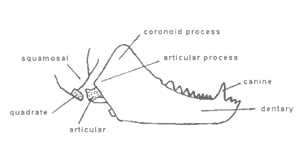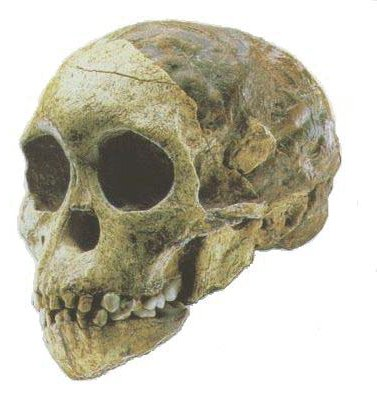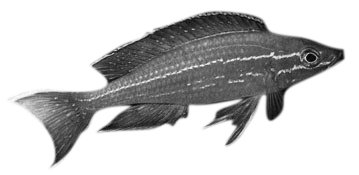Skeptics – always in two minds about something…
You may recall I mentioned in the last issue of the NZ Skeptic that we were surveying members to see if we were all still on roughly the same wavelength. We were spurred on to do this by the 4th World Skeptics Conference which saw long-time CSICOP leader Paul Kurtz call for Skeptics to take on religion, economics and politics as well as ghosts, UFOs, aliens, iridologists and the like.
It’s a big issue in the US, where they seem to feel under siege by the forces of religion and where a number of the Centres for Inquiry have been established in conjunction with the Humanist movement.
In discussing the issue with my Australian confreres, I felt, as did they, that our antipodean organisations had a different view as to what our core ideas should be, and it didn’t include assuming that all our members were Humanist Democrats! However, like any Skeptic worth his or her salt, I was prepared to change my mind should I be shown to be out of step with everyone else, hence the survey.
The results are now in (my thanks to the 15% of you who responded via post and online), and provide some food for thought.
As you will all have seen in our fine print and elsewhere, you officially belong to the New Zealand Committee for Scientific Investigation of Claims of the Paranormal (NZCSICOP) Inc. The name is something of an historical accident, modelled as we were on the US-based CSICOP from whence all things sprang.
And, as noted in our Constitution, our aim is to examine critically the paranormal (e.g. psychic phenomena) and pseudo-science (eg astrology, creation science).
In more recent years, we have become known informally as the New Zealand Skeptics. While it’s a lot easier to say on radio and takes up less column-inches in the newspaper, it does mean that we are often assumed to be sceptical about all things, including general religious beliefs, political movements and economic predictions.
This has meant that, on occasion, we have been castigated by various outsiders for not getting stuck into anything and everything.
So where do we sit? I suspect in the classic fence-sitters’ position, somewhere in between the two…
How Do We Define Who We Are?
Traditionally we have tended to regard our focus as being defined by those areas in which scientifically testable claims are made or where empirically-based evidence is presented.
Thus we don’t target, say, Christian beliefs per se, except where you have people who claim they have discovered a piece of the Ark (let’s test it!) or who assert that the Earth really is only 6000 years old (where’s the evidence?). Beliefs are perfectly valid in a church setting, but if you want to bring them into a science classroom, then you have to meet the sort of standards and criteria demanded of any legitimate science.
This can mean that from time to time, we are sceptical of claims which appear to be legitimate, accepted science. It is through questioning both received and revealed wisdom that we learn more about our world. And it does mean that we have to be prepared to change our minds in the light of convincing evidence.
This distinction we have made between the world of belief and the world of evidence is one which appears to have strong support. Of the survey respondents, just about all of you are happy with this distinction, with virtually everyone giving it a 1 or 2, “strongly agree” rating.
In the initial years of the Society, much of the focus was on the spoon-benders and mind-readers that were the popular New Age figures of the day. While we still search for any signs that they really do have special powers, over the past ten years or so NZCSICOP has tended to focus on those areas with the greatest potential for harm either for individuals or for society. This has certainly informed your committee’s discussions regarding Bent Spoon Award nominations and areas where we have made public comment.
Thus we have typically said that we’re not out to castigate Granny for reading the tea leaves, but we are concerned where people are exploited by those asserting some form of objective, testable reality to dubious practices or claims. Where the potential for harm exists – whether physical, mental, emotional, moral or economic – the Skeptics have considered it unethical not to challenge such claims.
It looks like this stance has been reflected in some of the survey results relating to what you perceive as our core areas of interest, which led to what some might see as surprising results. Two strong basic aspects of critical thinking were regarded as highly important – academic freedom and misuse of statistics.
The First Circle of Skepticism
The topical areas of core interest were identified as:
- alternative medicine
- creation science/intelligent design
- repressed/false memory
- global warming research
- GE/GM issues
This represents an interesting mix of the “easy” skeptical subjects and ones which are likely to include a broad range of opinions and hence be more problematic.
As your chair-entity, I am relatively sanguine about commenting on claims made by alternative practitioners – one can test many of the claims they make, cite sound research and generally put such areas through the rigor of the scientific process to see what comes out the other side.
Creation science, and its more recent evolution into intelligent design, has been a topic with us from the first. Again, it’s an area which makes readily testable assertions, and where the errors and manipulations of its proponents can be easily identified. This is not to say that it is a simple thing to deal with!
The latter three in that list, to some extent, represent topical concerns, and ones which can be particularly contentious. One respondent referred to them as “dangerous, expensive themes”. I am hoping that we have seen the peak in enthusiasm for repressed memory – it certainly caused a great deal of damage to a large number of individuals and families when at its height – but I think that sufficient skepticism and the weight of evidence against it may well see it relegated to the role of psychological fad.
Global warming and GE/GM issues are much more likely to stay with us as we work through the complexities of the science involved, and the even greater complexities of how we as individuals and as members of a broader society deal with these things. I know that our membership has a diverse range of views in this area – after all we count Green members, organic farmers, ecologists, RMA consultants and a whole host of people in our midst.
As topics, global warming and GE/GM fall well outside the realm of the paranormal, but there is more than enough room for debating the evidence from either end of the environmental and political spectrum and anywhere between! Personally, I don’t think this area is one where the ultimate decisions are necessarily going to be based on the science involved or the evidence presented. As a consequence, in my official capacity, I prefer, as our primer suggests, to “maintain a position of uncertainty where there is insufficient or ambiguous evidence”.
(And if you want to write and tell me I’m a wishy-washy fence-sitter, or convince me you know what’s going to happen with global warming or GE/GM, or provide me with material you think would help inform me, you’re welcome to do so. What I’d really like to hear, though, is how you think this re-lates to NZCSICOP and its aims.)
The Second Circle of Skepticism
This is the one which intrigued me, containing as it does many of the traditional areas of skeptical interest. It wasn’t until I worked my way through all the comments that I felt I saw the reasoning behind why such topics as astrology, ghosts, psychic phenomena and UFOs/aliens were regarded as second-tier interests.”
Many of you said you considered these topics to be dead issues”, easy targets, to be past the point where anyone takes them seriously anymore. The relatively low impact these topics have on society at large, and the unlikelihood of personal harm arising from them may well have played a part in their lesser rating. As one respondent put it:
“I used to be interested in paranormal phenomena, but I now think pseudo- and anti-science pose greater threats to our future, and that is where my interests now lie.”
Of course, one cannot be too complacent. We have seen deaths arise from UFO cults, and we know that thousands of dollars are taken in by psychic hotlines every month in this country. A salutary point to note is that while these results were being collated – and “scams and cons” graded into this section – the Press was giving lead coverage to a local businessman who had sent around $1 million to Nigeria in the hope of gaining untold millions in return…
Three other topics hit this second circle: counselling, organic/biodynamic agriculture and food scares.
The Outer Circle
It didn’t particularly surprise me to find meditation and economic predictions fall into the outer circle of skeptical interests. There are aspects of the meditation industry that may well attract our attention, and we’d all probably be sceptical of economic predictions regardless of whether we are members of NZSCICOP or not! But in general, they are not prime targets.
The one which did interest me was that of religious beliefs/faiths, as the responses to this one tended to be highly polarised, with scores of one or ten, with very few in between. Of those who did see it as a core interest, a number mentioned that belief systems are important in pushing people to promulgate misinformation, and so were therefore fair game. It should be noted that the respondents who graded religious beliefs with a one (core interest), tended to grade everything as a core interest.
However, the final results were unambiguous in putting religion per se outside our main brief. There are organisations which exist for those who want to directly challenge religions of whatever stripe, and many Skeptics have also been members of the Rationalists, Humanists, Atheist Society, Secular Students Club and the like. From the early-morning discussions I have had at various conferences, NZSCICOP members have as great a variety of religious/spiritual beliefs as they do political. I think that we are the stronger for that.
Predicting the Future for NZCSICOP
I think that our future is a fairly clear one, and one which ideally will have us all contributing in whatever fashion we can. We are planning some practical activities as a result of this survey.
We’ll be putting more resources online for people to have easy access to things like information flyers and useful databases (and we’ll be using some of that material in the NZ Skeptic for those of you without internet access).
We’re planning a competition for teachers, which will help us to establish and develop practical resources for the teaching of critical thinking across a range of levels in the education system.
We’re looking for more ways to be proactive in our approach, as many of you mentioned that as an important point to consider. Increasing contacts with like-minded organisations overseas will help in that regard, providing information and opportunities. Darwin Day, on February 12, provides one chance for us to take part in international celebrations of science, humanity and thought (see www.darwinday.org for more information).
We know what we need to do. We need to:
- communicate the im-portance of asking questions and looking for evidence
- encourage more critical thinking in our media and our youth
- keep a sense of humour and an open mind






